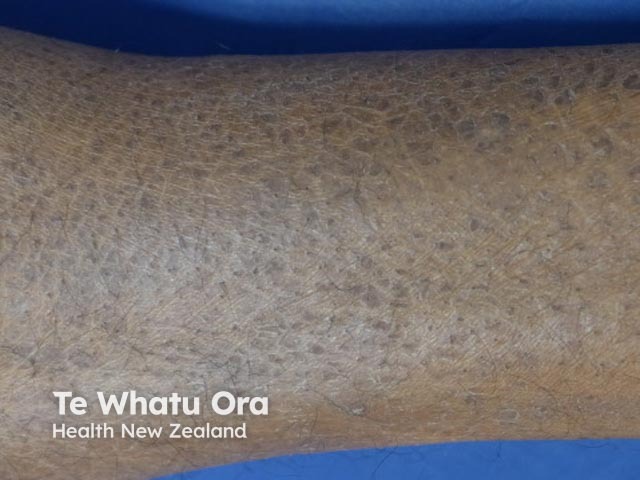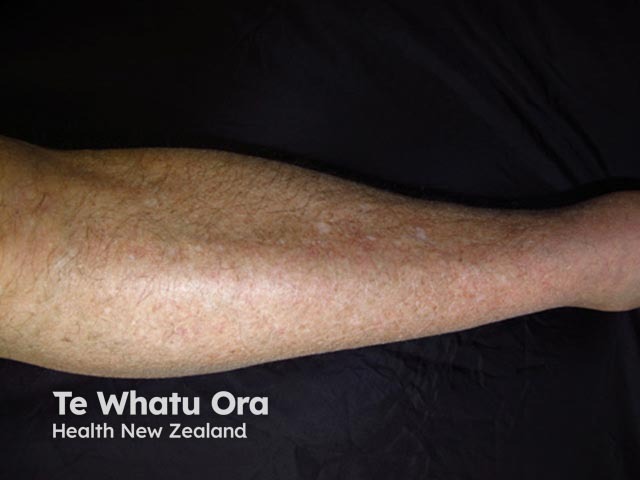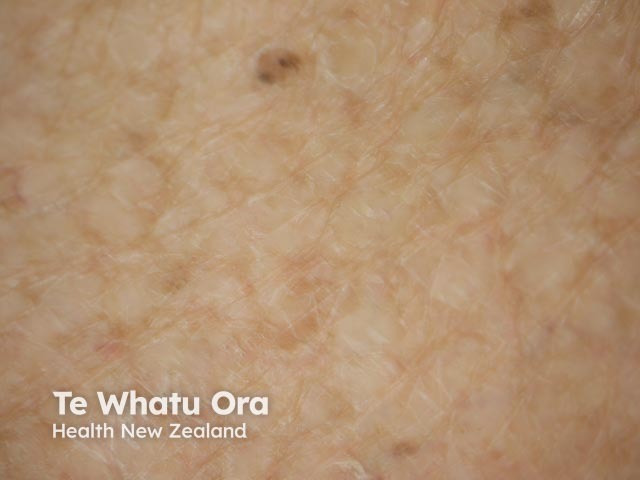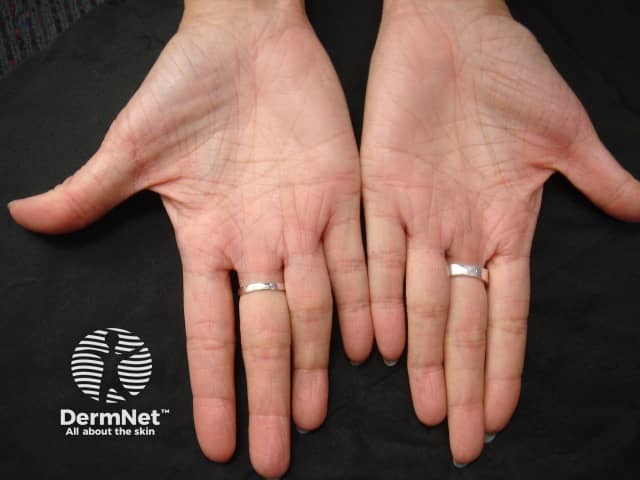Main menu
Common skin conditions

NEWS
Join DermNet PRO
Read more
Quick links
Author: Natasha Lee BSc (Hons), Medical Student, University of Leeds, United Kingdom, 2014.
Introduction Causes Demographics Clinical features Diagnosis Treatment
Ichthyosis vulgaris is characterised by excessive dry, scaly skin. It is the most common form of the inherited ichthyoses. The name “ichthyosis“ is derived from the Greek root “ichythys” meaning fish, to which ichthyosis vulgaris owes its other names, “fish scale disease,” or “fish skin disease”; “vulgaris” means common.
Ichthyosis vulgaris may be inherited or acquired. This page focuses on the more common inherited form.
Ichthyosis vulgaris results from loss-of-function mutations in the gene encoding the protein filaggrin (FLG), which is mapped on the epidermal differentiation complex on chromosome 1q21. The mutations lead to defective production of filaggrin.
Filaggrin is a filament-associated epidermal protein required for the binding of keratin fibres in epidermal cells, to form an effective skin barrier. It helps maintain the skin pH, retain moisture in the stratum corneum, and reduce trans-epidermal water loss (TEWL).
Xerosis or dryness results from the reduced skin hydration associated with defective filaggrin. Excessive scale results from the inability of the squames (skin cells) to remain hydrated as they move upward through the stratum corneum. Hyperkeratosis results from compensatory repair mechanisms increasing cell proliferation.
Ichthyosis vulgaris affects 1 in every 250 people. Filaggrin mutations have been reported most commonly in Europeans; prevalence in other races is under investigation.
Ichthyosis vulgaris is an autosomal semidominant condition. Semidominant means that a mutation in one gene of the chromosome pair results in a mild version of the disease, whereas a mutation in both genes on the chromosome pair results in a moderate to severe form.
Symptoms vary in severity and tend to be less severe in a warm, humid climate.
Atopic dermatitis (eczema) is present in 50% of people with ichthyosis vulgaris (and 8% of those with atopic eczema have the features of ichthyosis vulgaris). When atopic dermatitis is associated with severe ichthyosis vulgaris, the dermatitis tends to be early in onset, severe, and more likely to persist into adult life. There is also an increased risk of asthma, rhinitis and food allergy.

Ichthyosis vulgaris

Ichthyosis vulgaris

Ichthyosis vulgaris

Ichthyosis vulgaris
Ichthyosis vulgaris is usually a clinical diagnosis. Mild ichthyosis is often just called 'dry skin'.
Filaggrin mutations can be detected by research laboratories from a buccal smear or saliva sample.
On skin biopsy, histology shows hyperkeratosis in the stratum corneum and reduced or absent granular layer. Electron microscopy also shows reduced or absent keratohyaline granules, of which the main component is the protein pro-filaggrin, the precursor to the filaggrin.
Treatment aims to reduce dryness, scaling, splitting and thickening of the skin. This is achieved with exfoliation and moisturising on a regular, daily basis.
Apply emollients with high lipid content, such as lanolin cream (a sebum-like substance derived from wool-bearing animals).